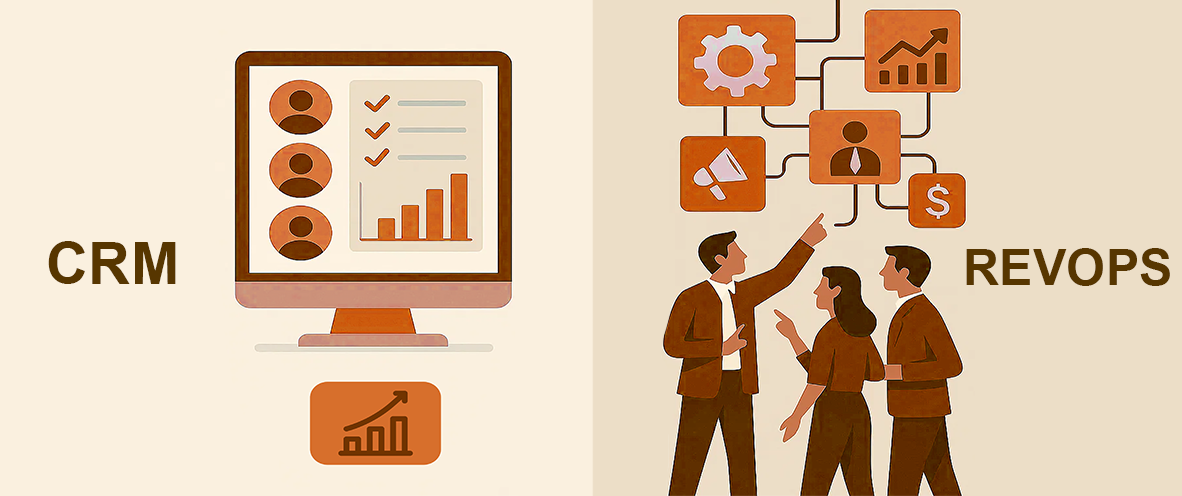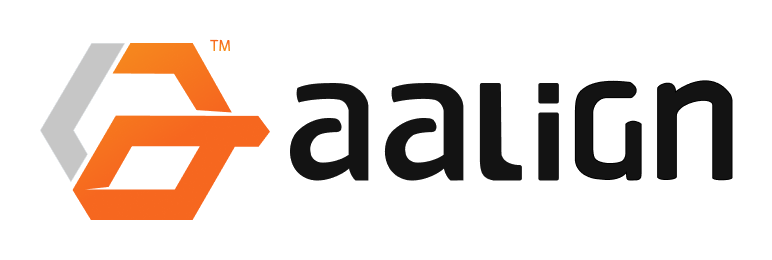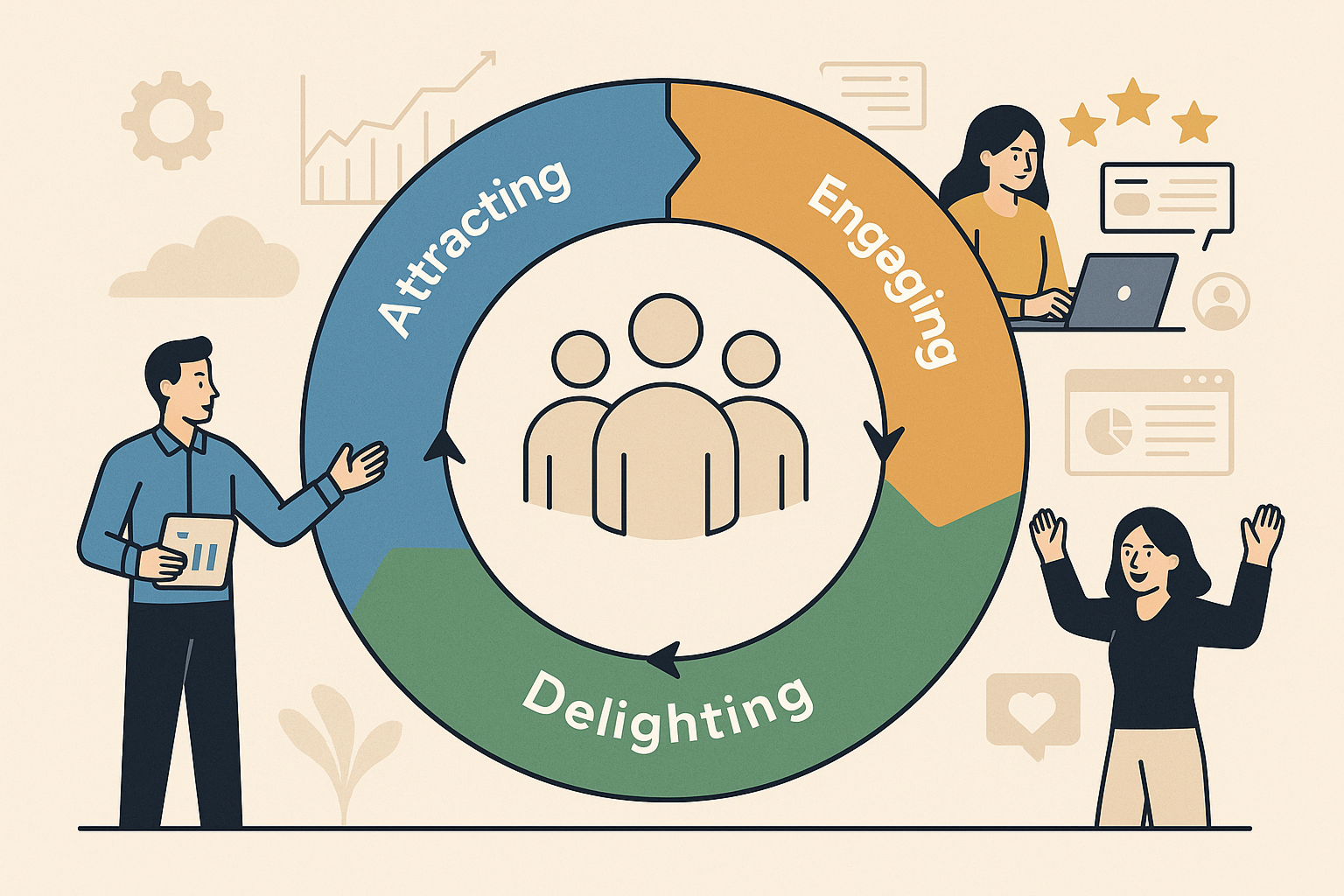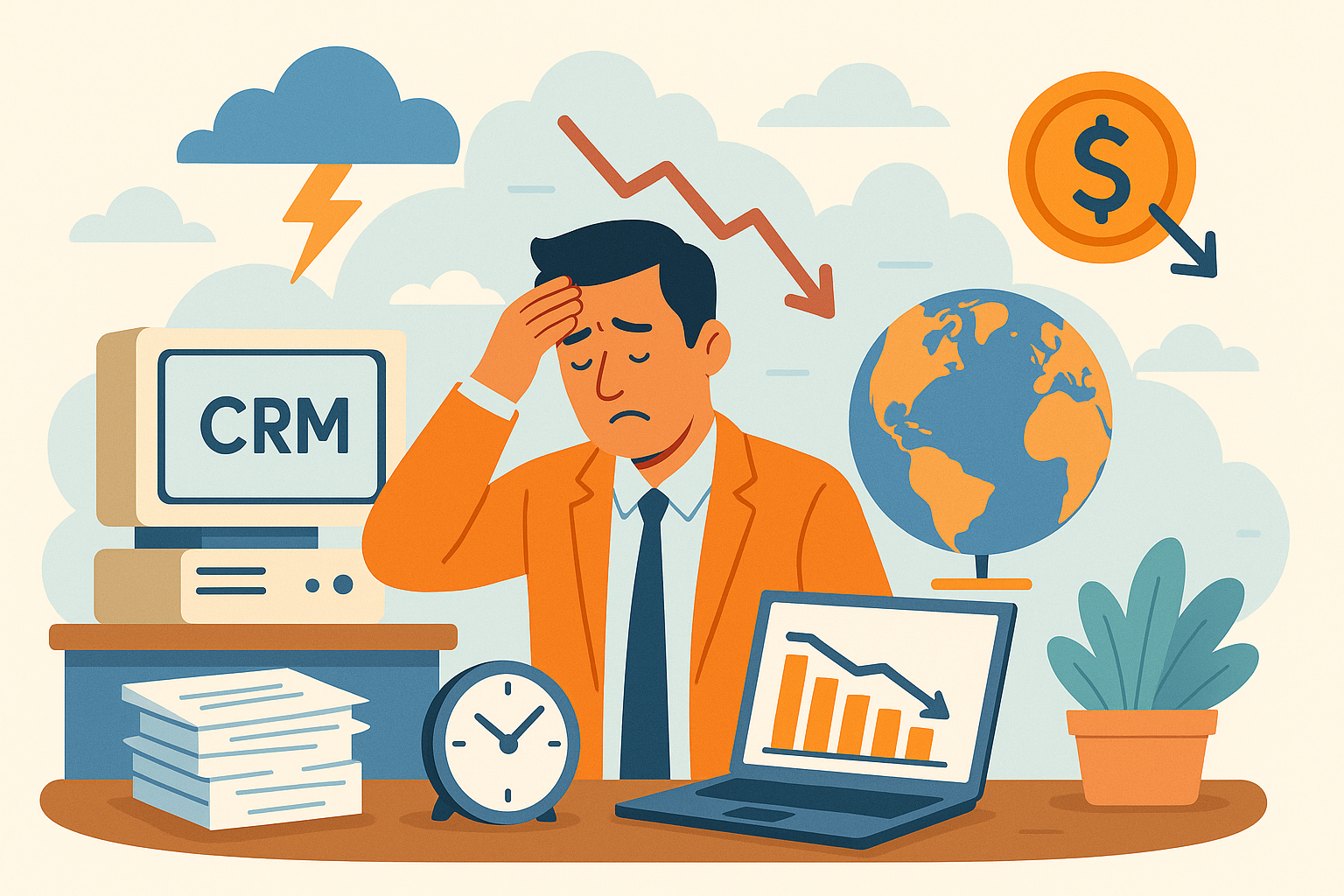CRM vs. RevOps Platforms: What’s the Difference (And Which One Does Your Team Need?)

As revenue teams evolve, the tools they use must evolve too. In 2025, businesses are increasingly asking a critical question: Do we need a traditional CRM, or is it time to move to a RevOps platform?
While the lines between the two may blur, understanding the key differences is crucial for B2B teams looking to scale, align departments, and maximize revenue outcomes.
Let’s break it down.
What Is a CRM?
Customer Relationship Management (CRM) software helps businesses manage interactions with prospects and customers. Traditionally, CRMs were built for sales tracking, contact management, and deal pipelines.
Common CRM Functions:
● Logging calls, emails, and meetings
● Managing opportunities and deals
● Forecasting revenue
● Storing customer contact data
● Generating basic reports
Examples: Salesforce, HubSpot CRM, Zoho CRM, Pipedrive
While CRMs are foundational, they often fall short when it comes to full revenue lifecycle visibility and team alignment across departments.
What Is a RevOps Platform?
RevOps (Revenue Operations) platforms go beyond sales data—they connect the dots between Sales, Marketing, and Customer Success, creating a unified system to drive predictable revenue.
Core RevOps Platform Features:
● Revenue lifecycle tracking (lead > close > expand)
● Marketing attribution + sales engagement + CS health in one view
● Workflow automation across teams
● Deep analytics: LTV, CAC, conversion velocity, churn signals
● Real-time data sync between tools (CRM, email, ads, support, etc.)
RevOps platforms aren’t just for logging data—they’re built to help revenue teams operate in sync, make smarter decisions, and scale efficiently.
CRM vs. RevOps Platforms: Key Differences
Feature CRM RevOps Platform
Focus Sales & contact management Full-funnel revenue operations
Team Usage Mostly Sales Sales, Marketing & Customer Success
Data Scope Deals, contacts, accounts Lifecycle data, behavior, revenue
InsightsProvided Sales pipeline reports Attribution, churn, velocity, LTV
Automation Limited to sales workflows Multi-department automations
Goal Track customer relationships Drive scalable, predictable revenue
Why the Shift to RevOps Is Accelerating
In 2025, companies are moving from siloed teams to lifecycle-centric teams. That means breaking down the walls between Marketing, Sales, and Customer Success—and building systems that allow them to operate with shared visibility.
Key Drivers Behind the Shift:
● Buyers now self-educate across multiple channels—RevOps tracks attribution.
● Sales cycles are longer—alignment reduces drop-off.
● Retention = growth—CS insights must be tied to CRM.
● Leadership demands visibility across the entire revenue engine, not just sales.
RevOps platforms help unify systems and people around one shared goal: revenue growth.
When a CRM Is Enough
If you're:
● A small team focused on pipeline building
● Mainly managing inbound or outbound sales
● Not yet running scaled marketing or CS operations
…then a standard CRM might be enough for now.
However, if you're scaling or hitting the limits of visibility and coordination, the cracks will show quickly.
When to Upgrade to a RevOps Platform
You’ll benefit from a RevOps platform if you’re experiencing:
✅ Marketing and Sales data silos
✅ Unclear attribution across campaigns
✅ Misaligned goals between teams
✅ Manual handoffs and missed SLAs
✅ Difficulty tracking churn signals or expansion opportunities
A platform like Aalign gives you one connected workspace to track, measure, and optimize the full revenue journey—from first click to closed deal to renewal.
Why Aalign Is Built for Modern Revenue Teams
At Aalign, we’re not just rebranding a CRM. We’ve built an all-in-one RevOps platform for today’s revenue teams who need:
🔗 Unified Dashboards – Get a real-time view of pipeline, MQLs, customer health, and revenue—all in one place. 🧠 AI-Powered Recommendations – Let AI surface deal risks, churn signals, and high-intent leads automatically. 🔄 Cross-Team Automation – Automate onboarding, handoffs, alerts, and follow-ups across Sales, Marketing & CS.
📈 Outcome-Based Reporting – Track what actually moves revenue—not just vanity metrics.
With Aalign, teams don’t just log activity—they drive impact.
Final Thoughts: CRM Is a System, RevOps Is a Strategy
CRMs are still important—but they’re no longer enough on their own. In a revenue-first world, businesses need a platform that brings people, processes, and data together.
So ask yourself:
Are we tracking deals? Or are we building a system for predictable growth?
If it's the latter, it’s time to move from CRM to RevOps—with Aalign.
📌 Ready to see how Aalign transforms your revenue engine?
Book a demo or explore the platform at www.aalign.io



